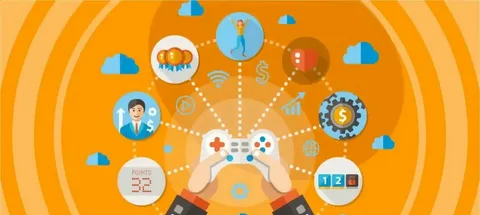
Winning Moves How Gamification Boosts Sales Performance
In today’s fast-paced business landscape, staying ahead of the competition requires innovative strategies that not only engage customers but also motivate sales teams to perform at their best. One such strategy gaining traction across industries is gamification. By applying game design elements and principles to non-game contexts, businesses are discovering how gamification can significantly enhance sales performance. In this article, we’ll explore the winning moves of gamification in sales and how it can propel your sales team to success.
Understanding Gamification
Gamification involves integrating game mechanics, such as points, badges, leaderboards, and challenges, into business processes to drive engagement, motivation, and productivity. By tapping into innate human desires for achievement, competition, and recognition, gamification transforms mundane tasks into enjoyable experiences, fostering a sense of accomplishment and progress.
The Psychology Behind Gamification
At the heart of gamification lies the psychology of motivation. Humans are wired to seek rewards and respond positively to challenges. By incorporating elements like rewards, feedback, and clear goals, gamification leverages these innate drives to incentivize desired behaviors. This psychological framework underpins the effectiveness of gamification in driving sales performance.
Leveraging Gamification for Sales Success
The first step in implementing gamification is defining clear objectives aligned with sales goals. Whether it’s increasing lead generation, boosting conversion rates, or improving customer retention, establishing measurable targets provides the foundation for designing effective gamified experiences.
Designing Engaging Challenges
Gamification thrives on engaging challenges that motivate participants to strive for mastery. By creating compelling missions, sales teams are encouraged to push their limits, driving continuous improvement and performance enhancement. From closing deals to surpassing sales quotas, well-designed challenges inject excitement into everyday tasks, transforming work into play.
Providing Real-Time Feedback
Effective feedback is essential for guiding behavior and fostering learning. In a gamified sales environment, real-time feedback mechanisms, such as progress bars, notifications, and performance dashboards, keep teams informed of their achievements and areas for improvement. Immediate feedback reinforces desired actions, enabling sales reps to course-correct and optimize their strategies in real-time.
Rewarding Achievement
Recognition and rewards are powerful motivators that fuel engagement and drive results. By acknowledging milestones and accomplishments, whether through virtual badges, leaderboard rankings, or tangible incentives, businesses can reinforce desired behaviors and incentivize consistent performance. Personalized rewards tailored to individual preferences further enhance motivation and foster a culture of healthy competition.
Case Studies: Gamification in Action
XYZ Corporation
XYZ Corporation, a leading software company, implemented a gamified sales platform to incentivize its sales team. By introducing a point system tied to specific sales targets and offering rewards for top performers, XYZ witnessed a significant increase in sales productivity and revenue generation. The competitive spirit fostered by the gamified environment motivated reps to exceed expectations, resulting in a 30% boost in quarterly sales.
ABC Retail leveraged gamification to enhance customer engagement and drive sales in its e-commerce platform. Through interactive challenges, such as completing purchases within a specified time frame or sharing product recommendations with friends, ABC incentivized customers to actively participate in the buying process. As a result, the company experienced a 25% increase in average order value and a 20% rise in repeat purchases, demonstrating the effectiveness of gamification in driving consumer behavior.
Conclusion
In an increasingly competitive business landscape, harnessing the power of gamification can provide the winning edge needed to excel in sales. By integrating game mechanics and psychological principles into sales processes, businesses can create engaging experiences that motivate sales teams to achieve their full potential. From setting clear objectives to designing compelling challenges and providing real-time feedback, gamification offers a versatile toolkit for driving performance improvement and fostering a culture of excellence. As illustrated by real-world case studies, the transformative impact of gamification on sales performance underscores its significance as a strategic imperative for modern businesses. Embrace the winning moves of gamification, and watch your sales soar to new heights.






Leave Your Comment